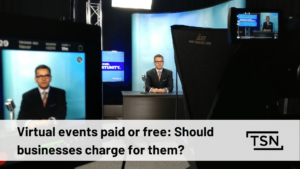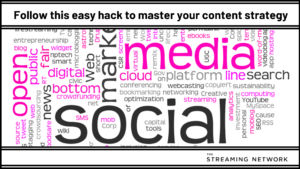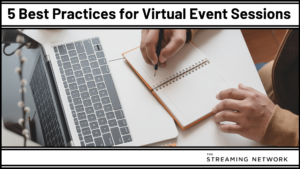So, it’s no secret that I really enjoy moderating webinars. I think part of it is that I secretly wish I went to school for Broadcast Journalism and landed a gig in primetime with CNN! When my customers follow our discussion based webinar format, I get to act like a real TV interviewer.
But it has been a couple months since I’ve gotten my hands wet, as I’ve been spending time on the other side of the desk, acting as the presenter rather than working my chops as the moderator.
But recently, that all changed! In the course of 2 days, I had the opportunity to moderate three webinars: a very fun event on The Art of Storytelling, a serious talk on treating anxiety in children and young adults with ASD, and a highly technical webinar on a new software development product (which I still don’t fully understand). So why am I writing this? Because this involved getting back up to speed and re-learning the art of moderation.
Here’s what I re-learned:
Do some homework
I like to see myself as the poor man’s AC360. Like Anderson Cooper, when the show (or webinar) begins, I do what is called a “cold open”, providing a stat or fact that sets the stage for the discussion before I welcome the audience and introduce the speaker.
You’ll find a great example of a ‘cold open’ below in the webinar I moderated for Autism Ontario:
In doing a little research on the topic and getting some data points, I was lead to an article that discussed the impact of anxiety in children and gained insight into how much more prevalent anxiety is found in the ASD population when compared with typical children. This brief research alone gave me enough understanding to allow me to feel as though I was in the conversation as opposed to just reading a list of predetermined questions (which was still certainly a part of what moderating the webinar involved). Remember, the reason we promote the discussion-based webinar format is to make the audience feel as though they are a part of the conversation rather than simply listening to a presentation.
Be the voice of the audience
Your most important job as a webinar moderator in this discussion-based format is to be the voice of the audience and this involves trying to ask questions that come from their point of view. This can be tremendously difficult when you are moderating an event you have put together yourself, because you are so close to the content and the messaging. In The Art of Storytelling webinar that I moderated, having dedicated my career to webinars, I was naturally interested in the topic and as someone who spearheads content here at TSN, I wanted to learn how to go beyond what I might want to hear as an audience member. If you compare this to the third webinar I referenced (that was focused on a new software development product), the target audience was enterprise application developers, which is not a demographic I can relate to as easily. I ensured that a pre-call with the main presenter was booked (I was hired by a third party agency), so that I could be equipped with a script and some basic understanding.
Don’t get too wrapped up in the discussion
Relaying audience questions to your speakers is a key part of your role as the host. If you watch The Art of Storytelling webinar, you will see that I only took 2 or 3 audience questions. It was not that we did not have more questions, but I was so wrapped up in the conversation that I simply ran out of time. I find that the closer to the content you are, the easier it is for this to happen. You want to interject and add colour that you think is relevant. When you are the moderator/organizer, this mistake is even easier to make. We want to drive engagement, and get your audience (who is pre-disposed to sitting back passively listening to your webinar) engaged. If you don’t leave room for the audience questions, you lose their trust. This can impact engagement in future webinars.
Click here to review our Engagement Methodology
Write your own script
As a moderator, I am often handed a rough script that typically includes housekeeping items, a (way too long) bio of the speaker, and a list of questions. They are always well written, fully vetted and well thought out. The issue is they are not my words! I often find myself on my way into the studio for my first webinar reading of the script and can’t seem to get any of it committed to memory. In my dry run, I basically rewrite the entire thing (with insight from the customer) and put it in my own words. I really should have done this from the beginning (I know better). Even if you are writing your own script, it usually starts out in a similar way as the scripts that were handed to me. I am naturally a pretty casual speaker so “humanizing” (as I like to call it) the corporate-speak comes easier for me than others. Ask yourself when you are running the script, “Do I sound like a human being?” and “Would I really say things like this anywhere but on this webinar?” It will likely lead you to make a few changes.
Any job worth doing is worth doing well! As someone who knows all of this and has written about it, talked about it, and done it more times than I can remember, I still seem to forget some of the key elements of my job!
You can review the Anxiety in Children with ASD webinar from Autism Ontario by visiting their webinar page.
Or check out The Art of Story Telling live re-broadcast on July 13th.






